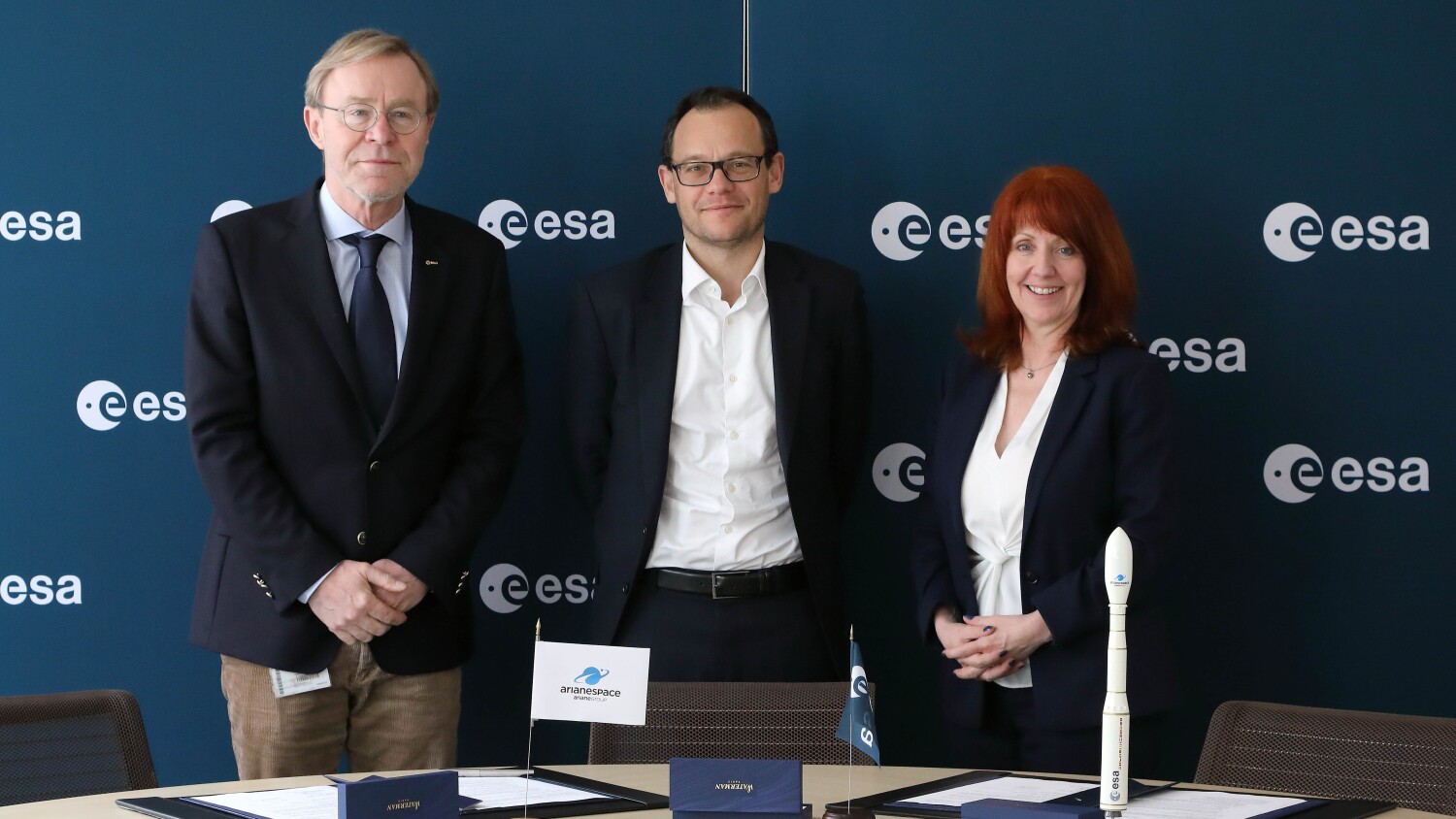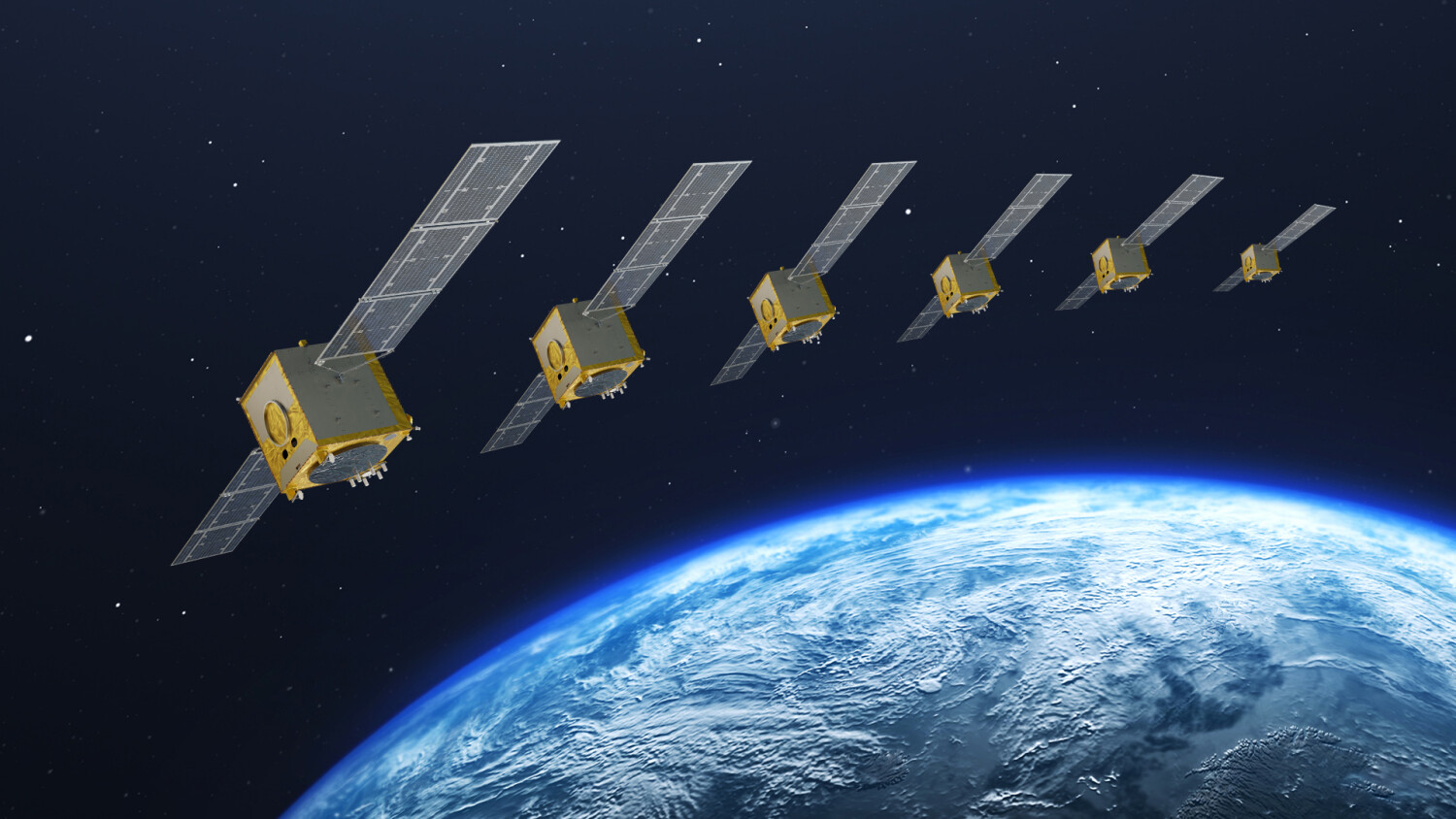On its ninth and final mission of 2019 —the third this year with the Soyuz medium-lift launcher from the Guiana Space Center (CSG) in French Guiana - Arianespace will perform a multiple launch at the service of innovative satellite solutions for European institutional needs.

The COSMO-SkyMed Second Generation satellite for the Italian Space Agency and Minister of Defence will be the primary passenger of this flight, along with the Characterising Exoplanet Satellite (CHEOPS) on behalf of the European Space Agency (ESA). Three auxiliary payloads also will be on board: ANGELS and EYESAT for the French CNES space agency; and OPS-SAT for Tyvak on behalf of ESA.
As demonstrated by this 49th Soyuz mission for Arianespace, the European launch services provider continues to address all Europe’s need for flexible, reliable and independent access to space.
Flight VS23 will be performed from the Soyuz Launch Complex (ELS) in Sinnamary, French Guiana.
TARGETED ORBITS
- COSMO-SkyMed Second Generation satellite in a Sun-synchronous orbit with a semi-major-axis at 6,997 km. with an inclination of 97.81°degrees,
- CHEOPS in a Sun-synchronous orbit with a semi-major-axis at 7,078 km. with an inclination of 98.22°degrees,
- Three auxiliary payloads: OPS-SAT / EYESAT / ANGELS, in a Sun-synchronous orbit altitude at approximately 500 km.
The Launch Readiness Review (LRR) will take place on Saturday, December 14, 2019 in Kourou to authorize the start of operations for the final countdown.
The COSMO-SkyMed Second Generation satellite is an Earth observation spacecraft featuring state-of-the-art technologies and engineering solutions, further bolstering Italian leadership in this sector. It will be the fourth satellite launched by Arianespace for the Italian Space Agency (ASI) and the ninth performed in total for Italy (comprising ASI, the Italian Ministry of Defence and Telespazio).
Manufactured by Thales Alenia Space (Italy), COSMO-SkyMed Second Generation will be the 162nd satellite manufactured by this constructor to be launched by Arianespace.
The Characterising Exoplanet Satellite (CHEOPS) is an ESA mission implemented in partnership – in particular with Switzerland. This 74th satellite to be launched by Arianespace for ESA will mark the 52nd mission conducted by the launch services provider at the service of this space agency.
CHEOPS is the first mission dedicated to studying bright, nearby stars that already are known to host exoplanets in order to make high-precision observations of the planet’s size as it passes in front of its host star. The spacecraft will focus on planets in the super-Earth to Neptune size range, with its data enabling the bulk density of the planets to be derived – a first characterization step towards understanding these alien worlds.
Airbus in Spain is prime contractor for the mission, with the University of Bern being responsible for the telescope.
Three auxiliary payloads also will be on board the Soyuz launcher for Flight VS23:
ANGELS (for: Argos Néo on a Generic Economical and Light Satellite), a 12U CubeSat, and is the French industry’s first nanosatellite. It is jointly financed and developed by the French CNES space agency (Centre National d’Etudes Spatiales) and Hemeria – an innovative industrial group active in the aerospace, defense, energy, rail and automotive markets (which is an affiliate of Nexeya).
EyeSat is a 3U CubeSat designed to study the zodiacal light and image the Milky Way. The EyeSat is being financed and developed by the French CNES space agency within the scope of the Janus project (Jeunes en Apprentissage pour la réalisation de Nanosatellites des Universités et des écoles de l’enseignement Supérieur), which is designed to encourage students in universities and engineering schools to develop their own very small satellites.
OPS-SAT, a 3U CubeSat, is the world’s first free-for-use, in-orbit testbed for new software, applications and techniques in satellite control. OPS-SAT was developed by the Graz University of Technology with subcontractors from Austria, Germany, Poland and Denmark. It will be operated by ESA from the European Space Operations Centre (ESOC) in Germany.
For further information, download the Flight VS23 Launch Kit by clicking here: http://www.arianespace.com/press-kits/
To watch a live, high-speed online transmission of the launch (including commentary in French and English from the launch site), go to arianespace.com or to youtube.com/arianespace on December 17, 2019, beginning 20 minutes before liftoff.
About Arianespace
Arianespace uses space to make life better on Earth by providing launch services for all types of satellites into all orbits. It has orbited more than 600 satellites since 1980, using its family of three launchers, Ariane, Soyuz and Vega, from launch sites in French Guiana (South America) and Baikonur, Kazakhstan.
Arianespace is headquartered in Evry, near Paris, and has a technical facility at the Guiana Space Center, Europe’s Spaceport in French Guiana, plus local offices in Washington, D.C., Tokyo and Singapore.
Arianespace is a subsidiary of ArianeGroup, which holds 74% of its share capital, with the balance held by 15 other shareholders from the European launcher industry.







